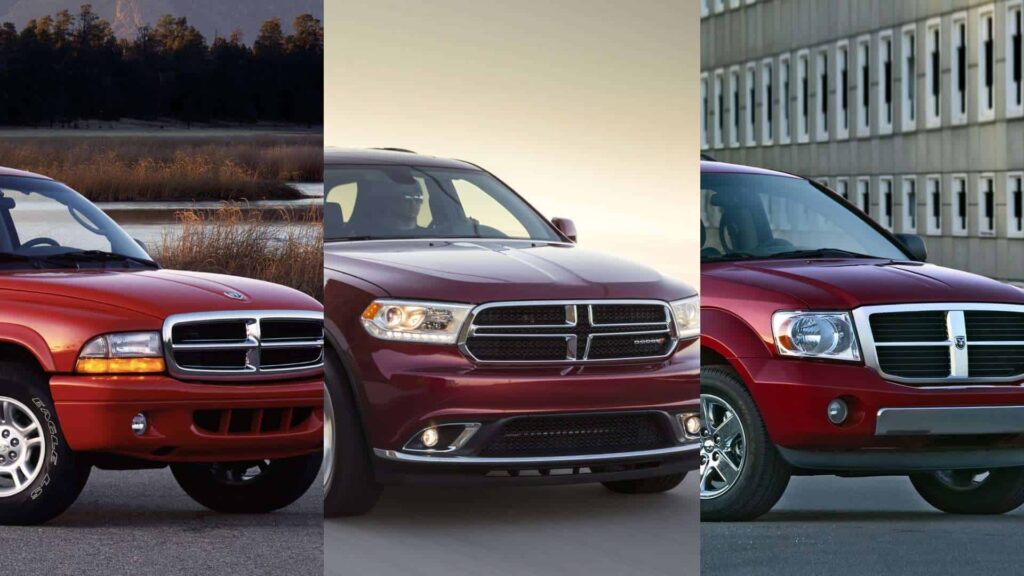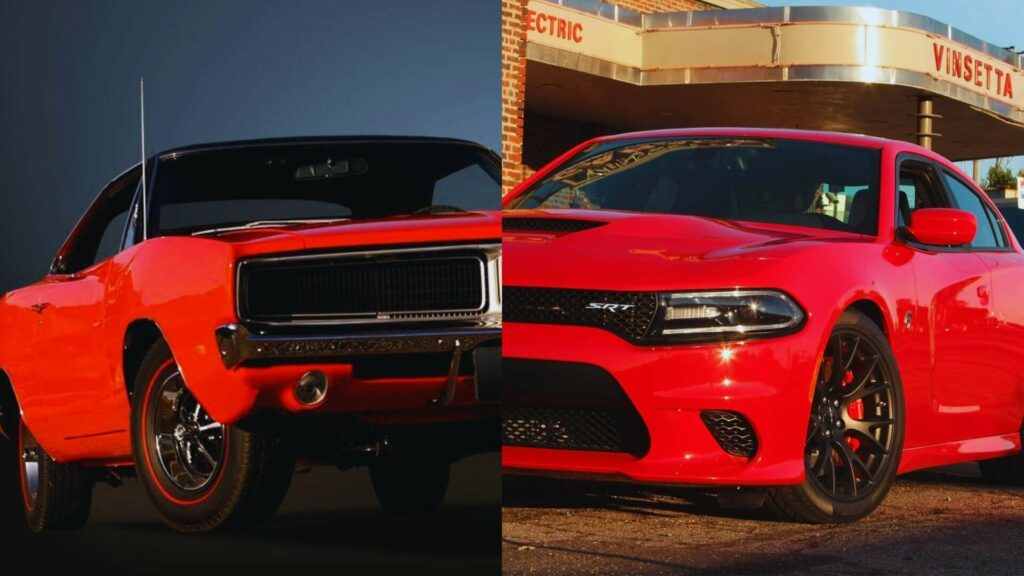The Durango is an American-made mid-size SUV by Dodge and is currently the only SUV in the manufacturer’s entire lineup ever since the discontinuation of the USDM Dodge Journey.
As with other vehicles from Dodge that we’ve discussed on our website, the Durango has gone through several generations that have introduced changes to its specifications.
For this article, we will be focusing mainly on the Dodge Durango’s bolt pattern and how each of its generations may differ in terms of that.
To further complement the Durango’s bolt pattern, we’ve also included information about other related specifications of each generation.
If you happen to own this one and only SUV from Dodge, then this would also be a nice opportunity to familiarize yourself with all sorts of measurements concerning its wheelset.
What is the bolt pattern of a Dodge Durango?
2011 to current (2022) Dodge Durango models are equipped with a bolt pattern of 5×5 inches (5x127mm).
2004 to 2009 Dodge Durango models were fitted with a bolt pattern that measured 5×5.5 inches (5×139.7mm).
Dodge Durango models between 1998 and 2003 all had a 6×4.5-inch (6×114.3mm) bolt pattern.
As you can see above, the bolt pattern of the Dodge Durango changed at the same time that each of its generations was introduced.
One thing that we can take note of here is that both the 2nd and 3rd-generation Dodge Durango models use a total of 5 bolts for their wheels (denoted by the first number on the bolt pattern).
Similarly, we can see that not only does the 1st generation have the biggest inner diameter (second number), but it also uses one bolt more than the others.
Differences like these tell us how important it is to get the bolt pattern right on just about any vehicle, especially if you plan on changing its wheels for aftermarket ones.
But as mentioned in the introduction, we’ve got other specifications for the Dodge Durango for you that are equally as important as its bolt pattern.
These are its other bolt specifications and wheel specifications that come standard, all of which we’ll be going over in the next part.
Wheel and Bolt Specifications of the Dodge Durango
Since the Dodge Durango has three different generations with three different bolt patterns, it gives us an even bigger reason to talk also about the various other specs it may have.
We have included each generation’s wheel specifications, which are comprised of the different tire sizes and rim sizes available for each trim level from the factory.
Do take note that the trim levels shown are named after the engines they have, as the wheel specifications are generally dependent on the engines and not just on the trim name (e.g. SXT).
Moving on to the Dodge Durango’s bolt specifications, we have included four different measurements that are applicable to all trim levels within a certain generation.
These four measurements include the center bore diameter, the type and number of wheel fasteners used, the thread size, and the torque specification needed to tighten the wheel bolts.
All of the details mentioned above will be presented starting from the newest to the oldest Dodge Durango generation.
3rd-Generation Dodge Durango (2011 to Present/2022)
The current Dodge Durango that’s still in production to this day actually first debuted way back in 2010 for the 2011 model year.
There was a two-year gap between this generation and the previous one, which eventually led to vastly different (and more aggressive) styling as the 3rd generation was unveiled.
Not only was it manufactured alongside the Dodge Charger of that time, but it even closely resembled the Charger in terms of its front fascia design.
While it did undergo several updates for both its exterior and interior features, they did not change anything about the 3rd generation’s wheel and bolt specifications.
The 3rd generation’s bolt specifications are very similar to what the 1st generation had, although this generation uses a metric bolt thread size (M14x1.5) instead of a UNF one.
This generation is also the only one with a different torque specification for its bolts, which is significantly higher than the one used for the past two generations.
Center Bore Diameter: 2.82 inches (71.6mm)
Wheel Fastener: Lug Nut (5)
Thread Size: M14x1.5
Torque Spec: 130lb-ft (176Nm)
There are currently only two trim levels for the 3rd-generation Durango in terms of engine size, which include a 3.6-liter Pentastar V6 and a larger-displacement 5.7-liter V8.
The 3.6-liter V6 gets two different 265mm-wide tire options with different aspect ratios depending on which rim size you choose.
Speaking of rim size, the V6 trim has an 18-inch option and a 20-inch option that both have exactly the same rim width/rim contour (8J) and rim offset (ET56.4).
The second engine trim is a 5.7-liter V8, which has the same 265mm tire size paired with the 20-inch rim size as its only set of factory wheel specifications.
2nd-Generation Dodge Durango (2004 to 2009)
The 2nd-generation Dodge Durango first went into production in 2003 for the 2004 model year, and it even had a concept model called the “Durango R/T Concept”.
Once again, the difference in styling between this generation and the first one was night and day.
The 2nd generation even stretched the Durango’s length, width, and height by a few more inches, thereby improving space for both passengers and cargo.
Among the three generations, the 2nd-generation Dodge Durango had the largest center bore diameter that was 0.24 inches bigger compared to the rest.
Also, this generation is one of the generations that used a UNF thread size, which was specifically a 9/16”-18.
When converting this to a metric bolt size, the closest equivalent would be an M14x2 (metric coarse) or an M14x1.5 (metric fine), which is very similar to the one on the 3rd generation.
If you would like to familiarize yourself more with the metric to UNF thread size conversions, we recommend looking at the conversion table below.

Center Bore Diameter: 3.06 inches (77.8mm)
Wheel Fastener: Lug Nut (5)
Thread Size: 9/16” – 18 UNF
Torque Spec: 85 to 114lb-ft (115 to 156Nm)
There were a total of three trim levels for the 2nd-generation Durango as far as the engine fitted was concerned.
The base 3.7-liter V6 trim was fitted with 245mm tires and 17-inch rims, while both the 4.7-liter and 5.7-liter V8 trims had wider 265mm tires and 18-inch rims instead.
Unlike the 3rd-generation model’s rims, however, the 2nd generation had a rim contour (also called “bead profile”) of “JJ” compared to the 3rd generation’s “J”.
1st-Generation Dodge Durango (1998 to 2003)
The Dodge Durango nameplate had its first model year back in 1998, though production for the model actually started a year before.
Its front fascia design is directly based on the 2nd-generation Dodge Dakota pickup truck, which made for good part interchangeability between the two vehicles.
Both its taillights and liftgate handle, however, were interchangeable with several Dodge and Chrysler-made minivans from those years.
The 1st generation’s center bore diameter is identical to the one of the 3rd generation. Though, it used 6 lug nuts (or bolts) as wheel fasteners instead of 5.
The thread size that it used was also a UNF one. When converted using the provided conversion table earlier, it equates to a metric size of M12x1.75 (coarse) or M12x1.25 (fine).
Other than that, this generation’s torque specification for its bolts remains identical to the one required for the 2nd generation’s bolts.
Center Bore Diameter: 2.82 inches (71.6mm)
Wheel Fastener: Lug Nut (6)
Thread Size: 1/2” – 20 UNF
Torque Spec: 85 to 114lb-ft (115 to 156Nm)
The first Dodge Durango generation both had the most trim levels and wheel specifications, despite the fact that its production run was one of the shortest in the lineup.
It initially started with three trims in 1997, namely the 3.9-liter V6, 5.2-liter V8, and 5.9-liter V8 (R/T trim).
By 1999, however, the 3.9-liter V6 trim was discontinued. The 5.2-liter V8 trim would follow suit with its own discontinuation a year after.
These two trims had their own respective sets of wheel specifications, though the 5.2-liter V8 had two extra sets added on top of what the 3.9-liter V6 trim already had.
A smaller-displacement 4.7-liter V8 option was then introduced in 2000 for the 2001 model year.
This option, together with the 5.9-liter V8 R/T trim, was offered until the 1st generation’s end of production in 2003.
The 4.7-liter V8 trim had a mixture of 235mm and 255mm tire sizes and also included rim sizes with either 15 or 16-inch diameters.
On the other hand, the “R/T” trim only had one set of wheel specifications, which included a 275mm tire size and a 17-inch rim size. Both of these sizes were unavailable on any other trim.
How to Tighten the Bolts on the Dodge Durango
Whenever you remove the wheels of your vehicle, such as when you want to swap them out for aftermarket ones, you need to keep in mind the proper tightening order for its bolts (or lug nuts).
This is because every wheel will have a different tightening order for its bolts to maintain an even distribution of tightening force across the wheel.
If you simply tighten the bolts going in clockwise or counterclockwise order, you could slightly flex the wheel in a certain direction that can cause one or more of its bolts to come loose again.
We’ve talked about how the Dodge Durango uses either 5 or 6 lug nuts depending on the generation.
With that said, we can refer to the Dodge Durango as having either “5-lug” or “6-lug” wheels. Thus, we will now be presenting two different tightening orders for these two wheels.

The left diagram shows a star-shaped pattern, which is the correct tightening order for all 5-lug wheel applications because of the odd number of lugs.
In the Dodge Durango’s case, this is applicable to the wheels of its 2nd and 3rd-generation models specifically.
The right diagram, in comparison, demonstrates a criss-cross pattern applicable to all vehicles that have 6-lug wheels. One such vehicle is the 1st-generation Dodge Durango.
Do keep in mind that you should only tighten the lug nuts to each generation’s recommended torque specifications when the vehicle is on the ground.
We recommend using a torque wrench for this and then setting it to the torque specifications for each generation we’ve mentioned above.
Otherwise, you can simply hand-tighten them until they’re just snug enough if you still have the vehicle jacked up.
The general industry recommendation is to drive the car for about 50 miles and then recheck the torque value of the bolts afterward.
If you notice any changes to their torque value, retorque them to the appropriate specification right away.
If they still keep loosening after every short drive, then you may need to recalibrate your torque wrench, clean between the wheel mating surfaces, or swap out your wheels for new ones.
When to Change the Tires on the Dodge Durango
The tires are another important component of your Dodge Durango’s wheels, as they are essentially your vehicle’s main contact point with the road.
If their tire treads get too worn out, then they could pose a risk as you’re driving along. We’ve dedicated this part to informing you about when you should be changing your tires.
Let’s first start by knowing just how long the tires on the Dodge Durango last, which is actually just about the same as the average tire on the average vehicle.
Most tires will last a good 60,000 to 75,000 miles under normal use, so unless you’re doing burnouts with your Durango, this would be the general tire lifespan you can expect.
However, there are still some factors that can affect the actual lifespan, such as how often you drive, what terrain you frequently drive on, and even the tire brand that you use.
If you have no idea how much you’ve driven on your tires already, then we’ve got two ways to measure the life of your tires via their “tread depth” for you below.

The first way is to check your tire’s “tread wear indicator bars”, which will be located deep within the grooves on newer tires.
On worn-out tires, however, these bars will sit parallel with the tire treads, since the treads have already become too thin.
Once this happens, then this is a good indication that you should be swapping out your tires for new ones already.
But since not every set of tires has these indicator bars, this is where the “penny test” on the right image comes into play.
Simply insert a penny upside down between the treads and check how much of Lincoln’s head remains hidden from view.
On new tires, only half of his head can be seen. On worn-out tires, however, his full head will be exposed.
This also means that you’ve gone past the legal tread depth limit of 1/16 (or 2/32) of an inch. At that point, it’s definitely the perfect time to change your tires.
How and When to Rotate the Tires on the Dodge Durango
Aside from tire changes, you also need to remember to get your Dodge Durango’s tires rotated to promote more even wear and extend their lifespan.
Not only will there be a different tire rotation interval, but there will also be a specific tire rotation pattern that should be followed depending on the type of tire and the drivetrain of the vehicle.
For instance, if you have fitted your Dodge Durango with directional tires, then there is only one way to rotate them regardless of the drivetrain or the make and model of the vehicle itself.

The image above demonstrates the “straight rotation” that doesn’t involve any sort of crossing, which works best for keeping directional treads from facing the wrong way.
When it comes to “non-directional” tires, though, the kind of tire rotation will be dependent on the drivetrain of the Dodge Durango.
Throughout its production run, the Dodge Durango was offered with either rear-wheel drive/2-wheel drive (RWD/2WD) or all-wheel drive/4-wheel drive (AWD/4WD).
Taking this into consideration, it just so happens that all of these can use the “rearward cross” pattern demonstrated below.

Now that you don’t have to worry about keeping the tire treads facing one direction, this tire rotation allows tires to be crossed or switch sides for more optimum wear.
As for the tire rotation interval, it would also be dependent on the drivetrain of your Dodge Durango.
2WD/RWD Dodge Durango models need their tires rotated every 5,000 to 7,500 miles.
4WD/AWD Dodge Durango models, on the other hand, should have their tires rotated every 3,000 to 5,000 miles instead.
Since 4WD or AWD vehicles have all four wheels actively engaged by the engine, this significantly increases their average tire wear, thus requiring more frequent tire rotations.




